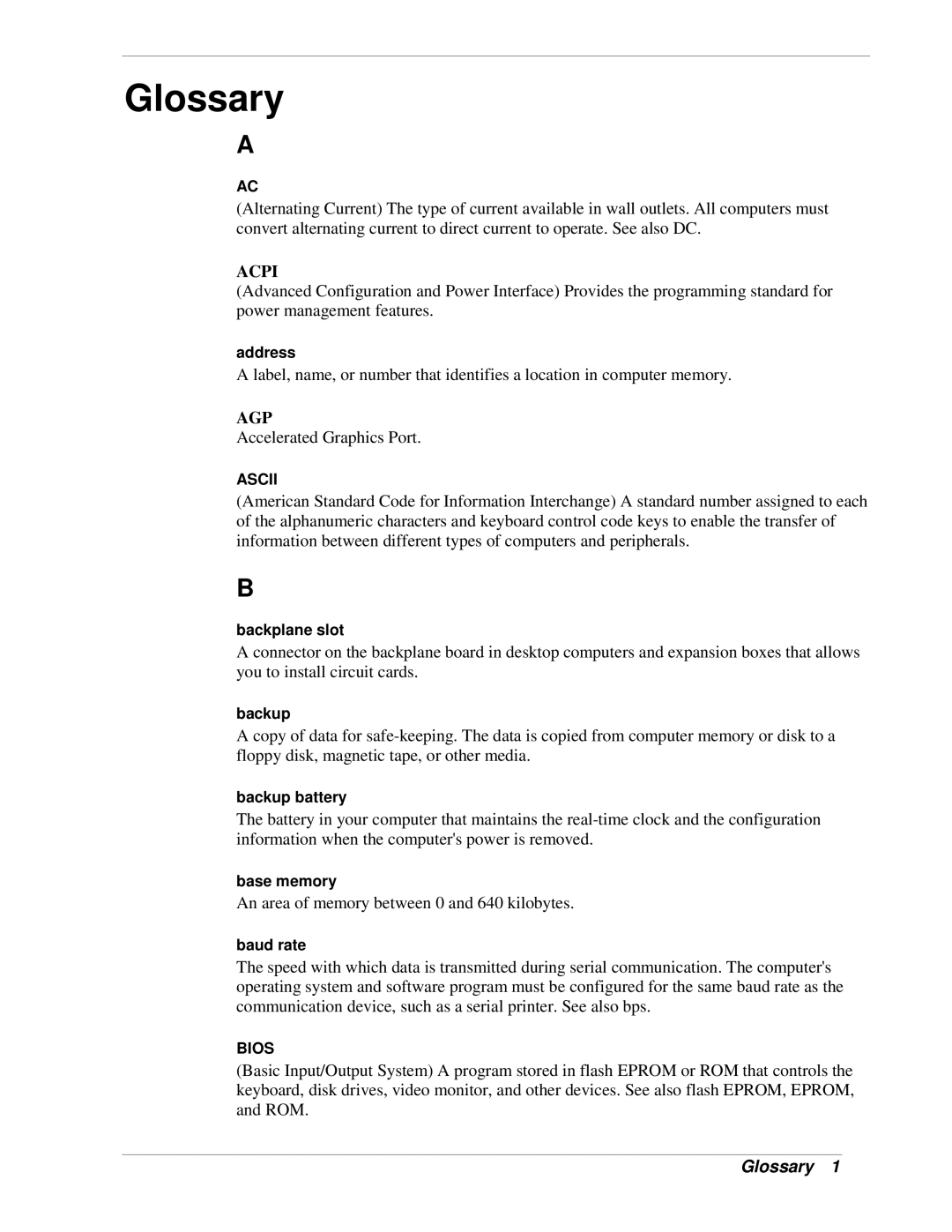
Glossary
A
AC
(Alternating Current) The type of current available in wall outlets. All computers must convert alternating current to direct current to operate. See also DC.
ACPI
(Advanced Configuration and Power Interface) Provides the programming standard for power management features.
address
A label, name, or number that identifies a location in computer memory.
AGP
Accelerated Graphics Port.
ASCII
(American Standard Code for Information Interchange) A standard number assigned to each of the alphanumeric characters and keyboard control code keys to enable the transfer of information between different types of computers and peripherals.
B
backplane slot
A connector on the backplane board in desktop computers and expansion boxes that allows you to install circuit cards.
backup
A copy of data for
backup battery
The battery in your computer that maintains the
base memory
An area of memory between 0 and 640 kilobytes.
baud rate
The speed with which data is transmitted during serial communication. The computer's operating system and software program must be configured for the same baud rate as the communication device, such as a serial printer. See also bps.
BIOS
(Basic Input/Output System) A program stored in flash EPROM or ROM that controls the keyboard, disk drives, video monitor, and other devices. See also flash EPROM, EPROM, and ROM.
